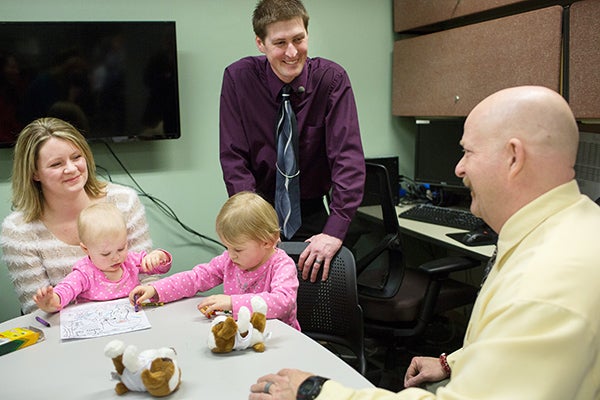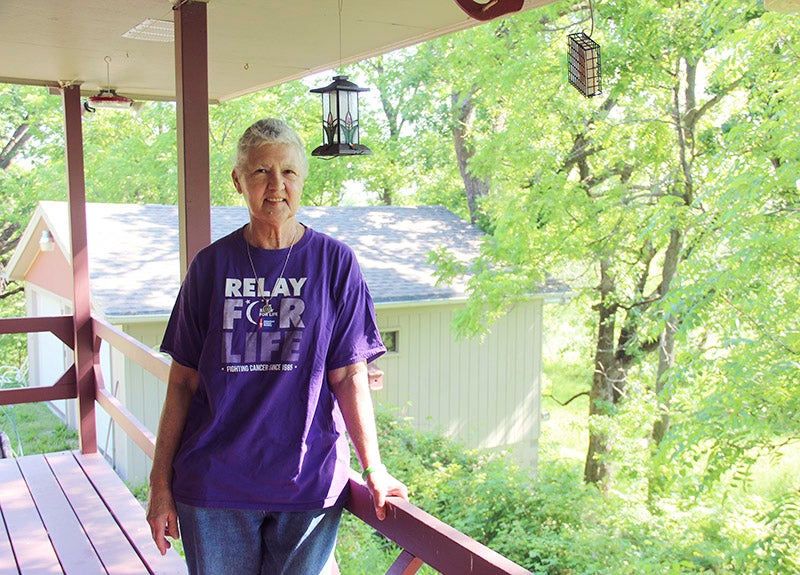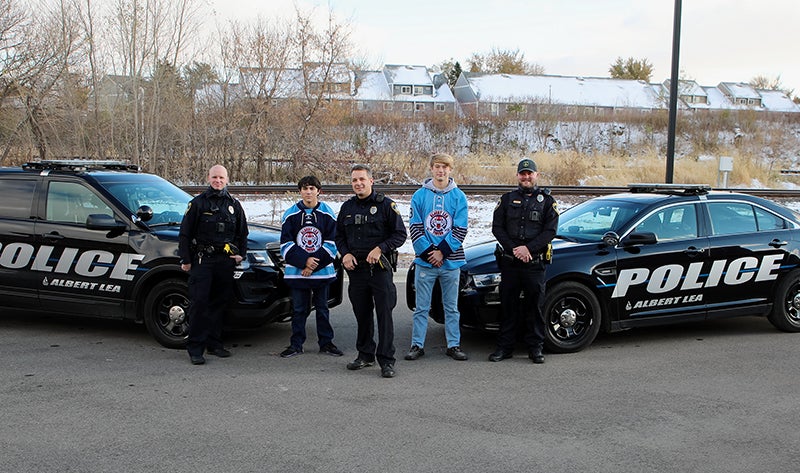Funding cuts threaten Poison Center’s future
Published 10:45 am Monday, March 16, 2015
By Lorna Benson, Minnesota Public Radio News
When 2-year-old Ayla Thompson drank mineral spirits that she’d found on the kitchen counter in her home, her father Bucko didn’t know how to help her while waiting for paramedics to arrive.
“Ayla started gagging,” he told legislators recently. “I can just picture my girl in my arms. She started gagging and coughing profusely and was having trouble breathing.”
Ayla’s intense cough meant that some of the solvent had gotten into her airway, making it difficult for her to get enough oxygen.
Desperate for advice, Thompson, a Warroad pharmacist, called the Poison Center in Minneapolis. Kirk Hughes answered.
“OK, you need to try and keep her awake, if possible,” Hughes told him. “I know that’s difficult, but we don’t want her to go to sleep at all.”

Haley and Bucko Thompson, with their two daugthers Edyn and Ayla, meet the Minnesota Poison Control Center’s Kirk Hughes, right, March 5, at Hennepin County Medical Center. Nearly a year ago, the Thompsons called the poison center after Ayla accidentally swallowed mineral spirits. They credit her survival to Hughes and the poison center. -Jennifer Simonson/MPR News
Thompson recalled that Hughes kept him focused on little things he could do to make Ayla comfortable. Meanwhile, another Poison Center specialist contacted paramedics and urged them to give the child oxygen as soon as they reached her house.
At the hospital, the emergency department physician told the Thompsons he also needed to talk to the Poison Center because he didn’t have the expertise to treat Ayla.
“We were there for seven hours in the ER monitoring Ayla,” Thompson said, “and the Poison Center was calling back to the ER, constantly on the phone with the physicians and the nurses there, to direct them what to do.”
Ayla survived. Thompson credits the Poison Center.
Now the Poison Center is facing a crisis.
The center is part of the Minnesota Poison Control System, which evolved from a few hospital-based poison centers in the 1970s and ’80s to one emergency call center located at Hennepin County Medical Center. The Poison Center’s toxicology specialists take an average of 132 calls a day, handling everything from household poisonings to drug overdoses and snake bites.
The Legislature mandated the creation of a single, integrated poison-control system, but it never fully funded the program. Now, as other sources of money dry up, the Poison Center says it needs more state support or it will scale back its 24-hour emergency call center.
The Poison Center received more than 48,000 calls last year. Sixty percent involved drug overdoses.
Children under age 6, like Ayla, are especially vulnerable to poisoning. They accounted for 45 percent of the calls. In most cases, young kids ingest common household items like cosmetics, personal care products or household cleaners.
Health care providers make almost a quarter of the calls to the Poison Center. Director Debbie Anderson explained that it’s impossible for most physicians to keep up with all there is to know about poisonings, especially when newer products are involved — such as laundry detergent pods or liquid nicotine from e-cigarettes.
“It’s not textbook,” she said. “It’s not something you can go and look up and say, ‘Oh, you’ve done step 1. Do step 2.’ Every situation is different.”
It takes more than a year to become nationally certified as a specialist in poison information. That’s over and above the standard qualifications of being a pharmacist or registered nurse.
Anderson said that if she had to cut any of her highly qualified staff, she would have to scale back the Poison Center’s 24-hour call center.
The center’s funding problems started a few years ago when its federal grants were cut by more than 30 percent. Now, Hennepin County Medical Center says its contributions to the Poison Center will end on July 1st. HCMC officials say it can no longer afford to be the only hospital that helps subsidizes the statewide program.
The problem is not unique to Minnesota.
Stephen Kaminski, executive director and CEO of the American Association of Poison Control Centers, said most poison centers in the United States are facing a funding crisis.
“Just since 2010 alone, six poison centers have had to close their doors because of funding reductions and funding cuts,” he said. “We’re not a governmental agency and not everyone realizes that. Every one of our centers has to scratch and claw for their funding.”
Part of the challenge, he said, is the hodgepodge way poison centers are funded. When times are lean, they usually get squeezed.
Minnesota currently provides half the money needed to run the Poison Center. If lawmakers approve the center’s $800,000 request, it will restore the program’s budget for now. But it won’t assure the Poison Center’s long-term future.





